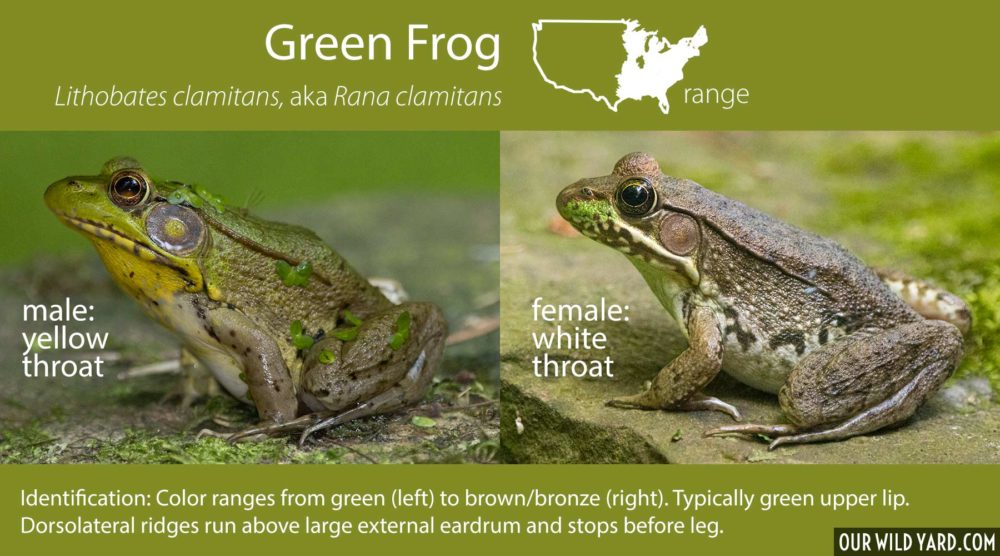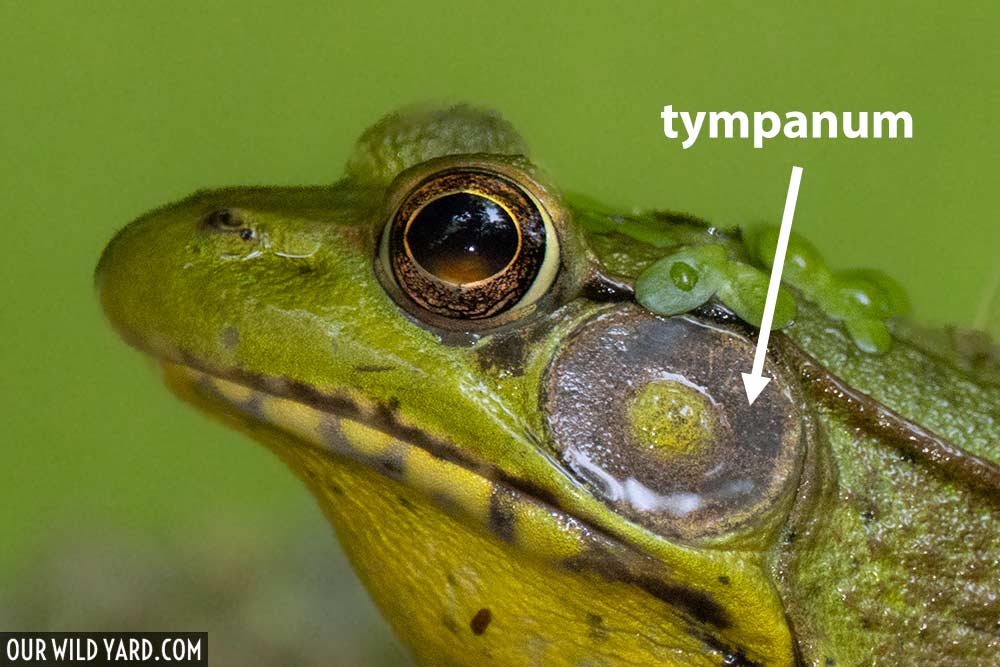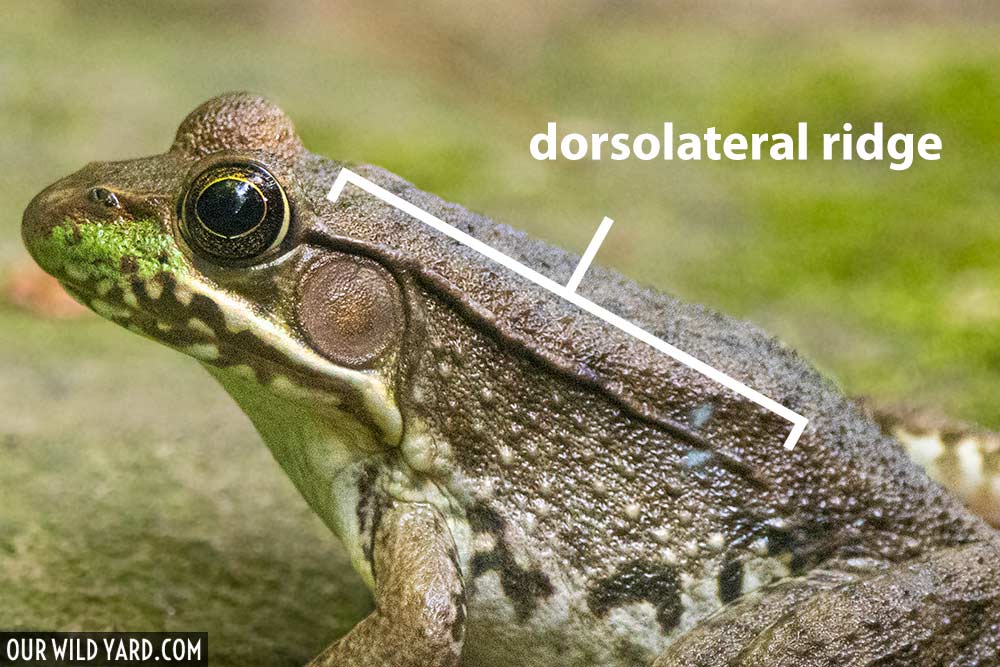This morning I walked out to visit the frogs at our backyard wildlife pond. Two beautiful frogs sat there, side by side. Though they were the same size and had similarities, they looked so different to me that I assumed they were different species. It turned out they were both Northern Green Frog (Lithobates clamitans or Rana clamitans) but one was a male and one was a female! Ready to learn how to tell the difference between a male and female frog? (At least for a Green Frog?)
The difference between male and female frog
The difference between male and female frog turned out to be quite simple. The male Green Frog has a yellow throat! The female has a white throat.

I also read that the male green frogs have “swollen thumbs” but when I ran back out to confirm that fact I noticed he was hiding them very carefully. If I manage to get a photo I’ll add them here.
*This article may contain affiliate links. We receive a small commission at no extra cost to you.*
Looking for a reptile and amphibian field guide? I usually use the Audubon Field Guide to North American Reptiles and Amphibians, but if I were going to buy another more specific to the eastern US I’d probably get the Peterson Field Guides, A Field Guide to Reptiles and Amphibians: Eastern and Central North America.
How to identify a Green Frog
Even though the two frogs in the photo above look quite different, you’ll notice a few important similarities. The two most obvious traits I look for first when trying to identify frog species in the eastern United States are the external eardrum (or ear disc) and the “dorsolateral ridge”.
The eardrum is pretty self-explanatory. It’s that big flat circular area behind the eye, known as a tympanum. While I could see it clearly on the male because the color contrasted with the green around it, it wasn’t obvious on the female until I examined the photo. But there it is! This external ear is especially obvious on species like the bullfrog and the green frog, but less obvious on the leopard frog and the wood frog.

The dorsolateral ridge (or dorsolateral fold) is the fold of skin that sticks out from each side of the head running backwards from the eye. On the Green Frog, the dorsolateral ridge is prominent and runs above the eardrum and down the side, but DOES NOT REACH THE BACK LEG. On a leopard frog (another common pond frog) this ridge runs all the way to the point where the back leg meets the body. On a bullfrog it curls around the back of the eardrum and stops.

Color: Green frogs typically have a green upper lip (as you can see on both the frogs in the first above). But overall, their color can range from quite green (like the male in the first photo) to brown or bronze (like this particular female). But in all cases, the belly is white with occasional darker spotting or lines.
Subspecies of Green Frog and Range
The Green Frog is found throughout the eastern United States (see range map on first photo above) but usually stays close to a permanent body of water. There are two subspecies of Green Frog: the Northern Green Frog (found in the northern states of the range) and the Bronze Frog (generally found south of North Carolina and Tennessee and west to Texas). As the name implies, Bronze frogs tend more toward brown or bronze in color.
Thanks for reading about the difference between male and female frog! We hope you’ll consider building a pond for wildlife in your yard so you can enjoy the frogs too!


My husband built me a small pond with a waterfall. We have a green frog who showed up last summer, wintered here (!) and now is sunning on a stone. I love seeing him/her enjoying living in our pond! I wish I could send you a photo so you can tell me if the frog is indeed a green frog and what the gender is.
Congrats Linda! It’s so exciting when frogs show up and make your pond home. Please feel free to send a pic to ourwildyard@gmail.com and I’d be happy to give you my unprofessional opinion!
Hal, I love this page and appreciate that you have created it to educate us! I sent you an email on October 27 and wonder if you received it. I sent you photos of the frog in my lily pond and asked if you think it’s green frog. I hope it is!
Hi Bonnie, Thanks for the message! I’m sorry I haven’t seen any emails come in from you! It has been a hectic time here in Asheville with the hurricane so maybe I missed it. But you’re welcome to try again! Thanks – Hal
Hal, I wrote to you October 27 to this address:
I’ll send it to you again.
Looks as though your email address was deleted from my message, probably because of the angle brackets I surrounded it with. I sent it to ourwildyard@gmail.com. I hope by now you saw the email I re-sent to you, complete with photos. Hoping to hear from you soon about my frog, Hal!!!